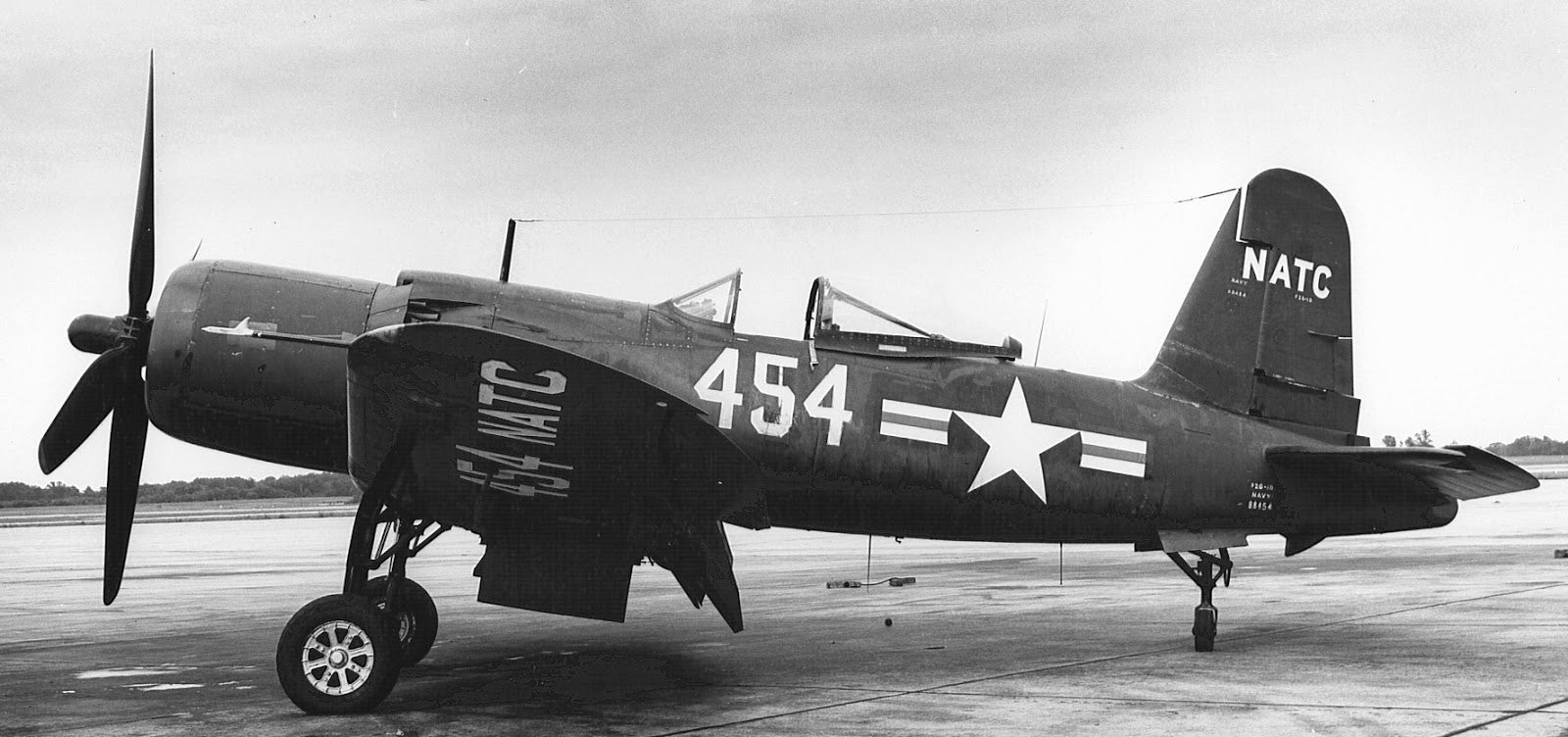 by "ttyymmnn" (ttyymmnn)
by "ttyymmnn" (ttyymmnn)
Published 09/14/2017 at 16:04
 by "ttyymmnn" (ttyymmnn)
by "ttyymmnn" (ttyymmnn)
Published 09/14/2017 at 16:04
Tags: Planelopnik
; wingspan
STARS: 11
Most folks know that the Gloster Meteor was the first jet-powered fighter to enter service with the RAF, and the only Allied jet fighter of the war. But did you know that it was also the world’s first turboprop-powered aircraft to take flight?

A single Meteor F.1, serial number EE227, had its Rolls-Royce Derwent turbojets removed and replaced with Rolls-Royce Trent turboprops. The undercarriage was lengthened to provide clearance for the 7-foot 7-inch diameter Rotol props which were turned through a reduction gear. EE227 took its first flight in September 1945, and was subsequently flown at higher power and with smaller props to help develop what was a very complicated engine control system. The testing program ended in 1948.
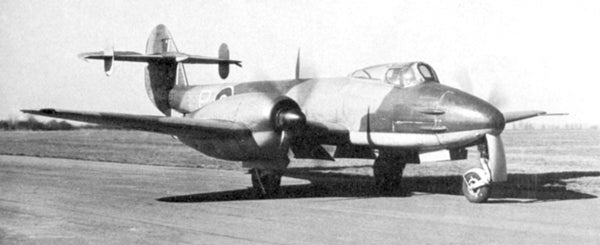
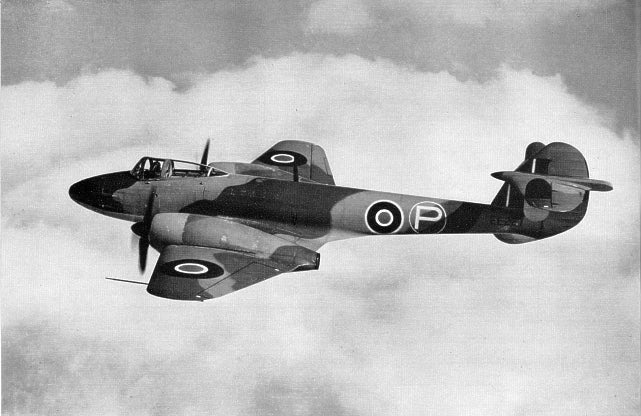
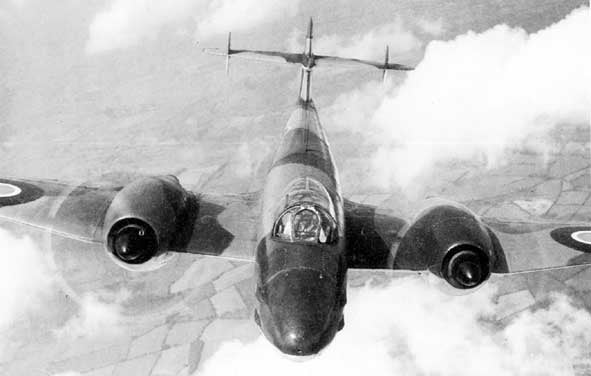
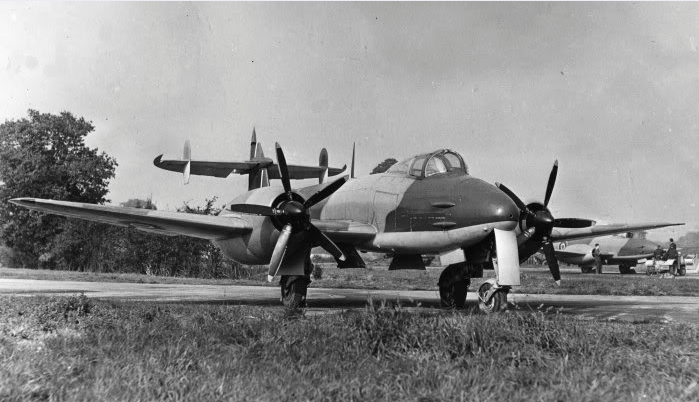
 "Cé hé sin" (michael-m-mouse)
"Cé hé sin" (michael-m-mouse)
09/14/2017 at 16:23, STARS: 1
Scary fact about the Meteor (and other planes of the era): 890 were lost by the RAF, 145 of which were in just one year, 1953. That’s a rate of three a week. Pilots who flew these must have been brave indeed.
 "If only EssExTee could be so grossly incandescent" (essextee)
"If only EssExTee could be so grossly incandescent" (essextee)
09/14/2017 at 16:24, STARS: 0
Knowledge Check: without googling, tell me what the first turboprop powered commercial airliner was.

09/14/2017 at 16:30, STARS: 0
I want to say the Electra, but I have a feeling that’s wrong.
 "RamblinRover Luxury-Yacht" (ramblininexile)
"RamblinRover Luxury-Yacht" (ramblininexile)
09/14/2017 at 16:37, STARS: 1
Something very odd that I just noticed: conformation-wise, layout-wise, etc. the Canberra is pretty much just a scaled-up Meteor.
 "ttyymmnn" (ttyymmnn)
"ttyymmnn" (ttyymmnn)
09/14/2017 at 16:42, STARS: 6
Absolutely. The Meteor was used as the primary trainer for the Canberra. Interestingly, the Canberra follows the design ethos of the de Havilland Mosquito: put the most powerful engines you can find into the lightest airframe possible. Hence its tremendous success.
 "ttyymmnn" (ttyymmnn)
"ttyymmnn" (ttyymmnn)
09/14/2017 at 16:44, STARS: 0
Okay, I cheated, but I knew it was British. Half credit?
 "Cé hé sin" (michael-m-mouse)
"Cé hé sin" (michael-m-mouse)
09/14/2017 at 16:46, STARS: 3
Viscount?
 "ttyymmnn" (ttyymmnn)
"ttyymmnn" (ttyymmnn)
09/14/2017 at 16:48, STARS: 2
Or dedicated. That’s an atrocious rate of attrition.
 "If only EssExTee could be so grossly incandescent" (essextee)
"If only EssExTee could be so grossly incandescent" (essextee)
09/14/2017 at 17:03, STARS: 0
Yep
 "If only EssExTee could be so grossly incandescent" (essextee)
"If only EssExTee could be so grossly incandescent" (essextee)
09/14/2017 at 17:06, STARS: 0
It’s wrong.
 "ttyymmnn" (ttyymmnn)
"ttyymmnn" (ttyymmnn)
09/14/2017 at 17:10, STARS: 2
Vickers Viscount
 "If only EssExTee could be so grossly incandescent" (essextee)
"If only EssExTee could be so grossly incandescent" (essextee)
09/14/2017 at 17:12, STARS: 0
No credit. Assuming a major aeronuatic innovation was British is like assuming that dolphins like to swim.
 "ttyymmnn" (ttyymmnn)
"ttyymmnn" (ttyymmnn)
09/14/2017 at 17:15, STARS: 1
Of that era, yes. These days, it would be like assuming that dolphins have thumbs.
 "If only EssExTee could be so grossly incandescent" (essextee)
"If only EssExTee could be so grossly incandescent" (essextee)
09/14/2017 at 17:18, STARS: 1
How do you know they don’t?
 "Cé hé sin" (michael-m-mouse)
"Cé hé sin" (michael-m-mouse)
09/14/2017 at 17:34, STARS: 0
It’s probably not unusual for the time though. I seem to recall that the (later) Lockheed Starfighter that the Luftwaffe operated used to crash at a horrendous rate and civilian planes came down much more often than today.
 "ttyymmnn" (ttyymmnn)
"ttyymmnn" (ttyymmnn)
09/14/2017 at 17:44, STARS: 3
When I read through historical events in aviation, it’s really astonishing how many crashes there were, even into the 1970s. I would imagine that back in the 50s and before death was just an expected part of flying. Hell, Thomas Selfridge was the first person to die in a plane crash and he was flying with Orville Wright. I don’t think that the general public truly appreciates how unbelievably safe flying has become. Being a test pilot has even become pretty safe.
 "BaconSandwich is tasty." (baconsandwich)
"BaconSandwich is tasty." (baconsandwich)
09/14/2017 at 20:55, STARS: 0
Interesting tail design. Any idea why it was done that way? It’s almost like they thought “Hey, you know what, our tail could use a tail.”
 "ttyymmnn" (ttyymmnn)
"ttyymmnn" (ttyymmnn)
09/14/2017 at 21:24, STARS: 2
I think it was for added lateral stability. I’m no expert, but I’m guessing the aero was different with the props vs the jets. More turbulence perhaps?
 "ttyymmnn" (ttyymmnn)
"ttyymmnn" (ttyymmnn)
09/15/2017 at 14:34, STARS: 3
I was looking through a book of US Naval fighters that I just received and it has a lengthy article on the F4U Corsair. One of the pictures shows a late version of the Corsair, the Goodyear F2G, or “Super Corsair,” that came with a 3,000 hp Wasp Major engine (only 10 were built). Not only did it receive a bubble canopy that required the removal of the dorsal ridge, but the vertical stabilizer was also made taller to cope with the extra torque from the mammoth engine. So, therein may lie the answer to your question about the tail on the turboprop Meteor. It had been designed as a jet, but the props added significantly more torque (not sure if they were counter-rotating, probably not).
